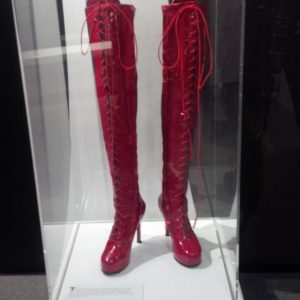The Curious History of Men in Heels
 I was in Toronto a month ago for business and had some down time to explore the city. One place that caught my interest was the Bata Shoe Museum, which is dedicated to all things footwear.
I was in Toronto a month ago for business and had some down time to explore the city. One place that caught my interest was the Bata Shoe Museum, which is dedicated to all things footwear.
At first, I didn’t know if I was going to be interested in going there. But a Torontonian colleague told me that I might actually like it. So I went there with an open mind and a discounted ticket and left surprisingly wishing I could stay longer!
It was actually a very interesting, thought-provoking visit. The museum goes into the long and fascinating history of footwear around the world, from the ancient Egyptians to today’s popular women’s wear. When you think about, the shoes we wear do have an effect on social, political and cultural trends.
The best exhibit I saw was one on the history of men in heels. It’s very rare to see men in heels today, with the exception of some gender-bending trendsetters. But for the most part, heels are seen as the ultimate female fashion statement.
But did you know that back in the 1600s high heels were only worn by men who wanted to show off their masculinity, authority, and wealth? About a hundred years later, there was a sharp reversal when it became unmasculine for men to care so much about their attire like women, and so men in heels went to the wayside.
However, there have been short, cultural periods when men in heels came back into fashion, like cowboy boots and glam rock platforms. The dearly departed Prince was also famous for challenging gender norms in his high-heeled dance moves.
The “Standing Tall” exhibit is on view at the Bata Shoe Museum through May 2017. You can see some of these great, masculine heels here.